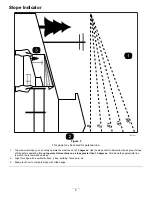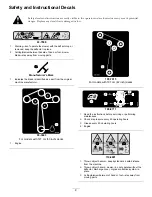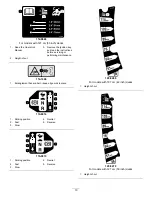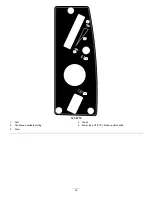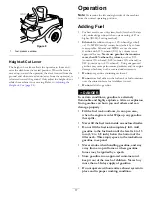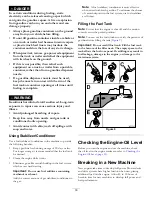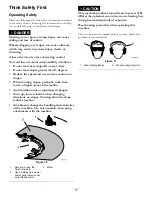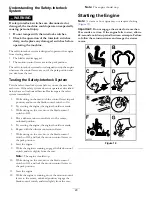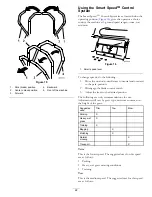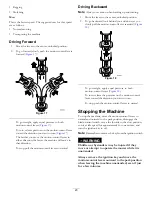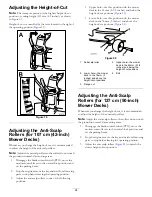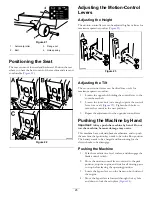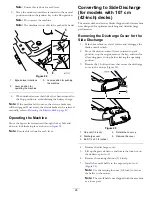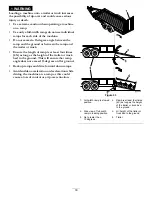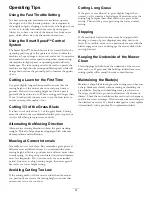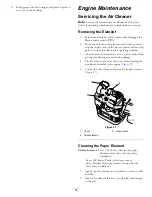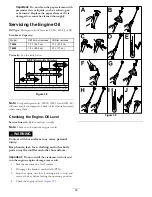
Understanding the Safety-Interlock
System
WARNING
If safety-interlock switches are disconnected or
damaged, the machine could operate unexpectedly
causing personal injury.
•
Do not tamper with the interlock switches.
•
Check the operation of the interlock switches
daily, and replace any damaged switches before
operating the machine.
The safety-interlock system is designed to prevent the engine
from starting unless:
•
The blades are disengaged.
•
The motion-control levers are in the park position.
The safety-interlock system also is designed to stop the engine
whenever the control levers are out of the park position and
you rise from the seat.
Testing the Safety-Interlock System
Test the safety-interlock system before you use the machine
each time. If the safety system does not operate as described
below, have an Authorized Service Dealer repair the safety
system immediately.
1.
While sitting on the seat, with the control levers in park
position, and move the blade-control switch to On.
2.
Try starting the engine; the engine should not crank.
3.
While sitting on the seat, move the blade-control
switch to Off.
4.
Move either motion-control lever to the center,
unlocked position.
5.
Try starting the engine; the engine should not crank.
6.
Repeat with the other motion-control lever.
7.
While sitting on the seat, move the blade-control
switch to Off, and lock the motion-control levers in
the park position.
8.
Start the engine.
9.
While the engine is running, engage the blade-control
switch, and rise slightly from the seat.
Note:
The engine should stop.
10.
While sitting on the seat, move the blade-control
switch to Off, and lock the motion-control levers in
the park position.
11.
Start the engine.
12.
While the engine is running, move the motion-control
levers to the center, unlocked position, engage the
blade-control switch, and rise slightly from the seat.
Note:
The engine should stop.
Starting the Engine
Note:
A warm or hot engine may not require choking
).
Important:
Do not engage the starter for more than
10 seconds at a time. If the engine fails to start, allow a
60-second cool-down period between attempts. Failure
to follow these instructions can damage the starter
motor.
g027535
B
C
D
E
A
G
F
Figure 12
20
Summary of Contents for timecutter zs 4200t
Page 55: ...Schematics Electrical Diagram Rev A 55 ...
Page 56: ...Notes 56 ...
Page 57: ...Notes 57 ...
Page 58: ...Notes 58 ...



